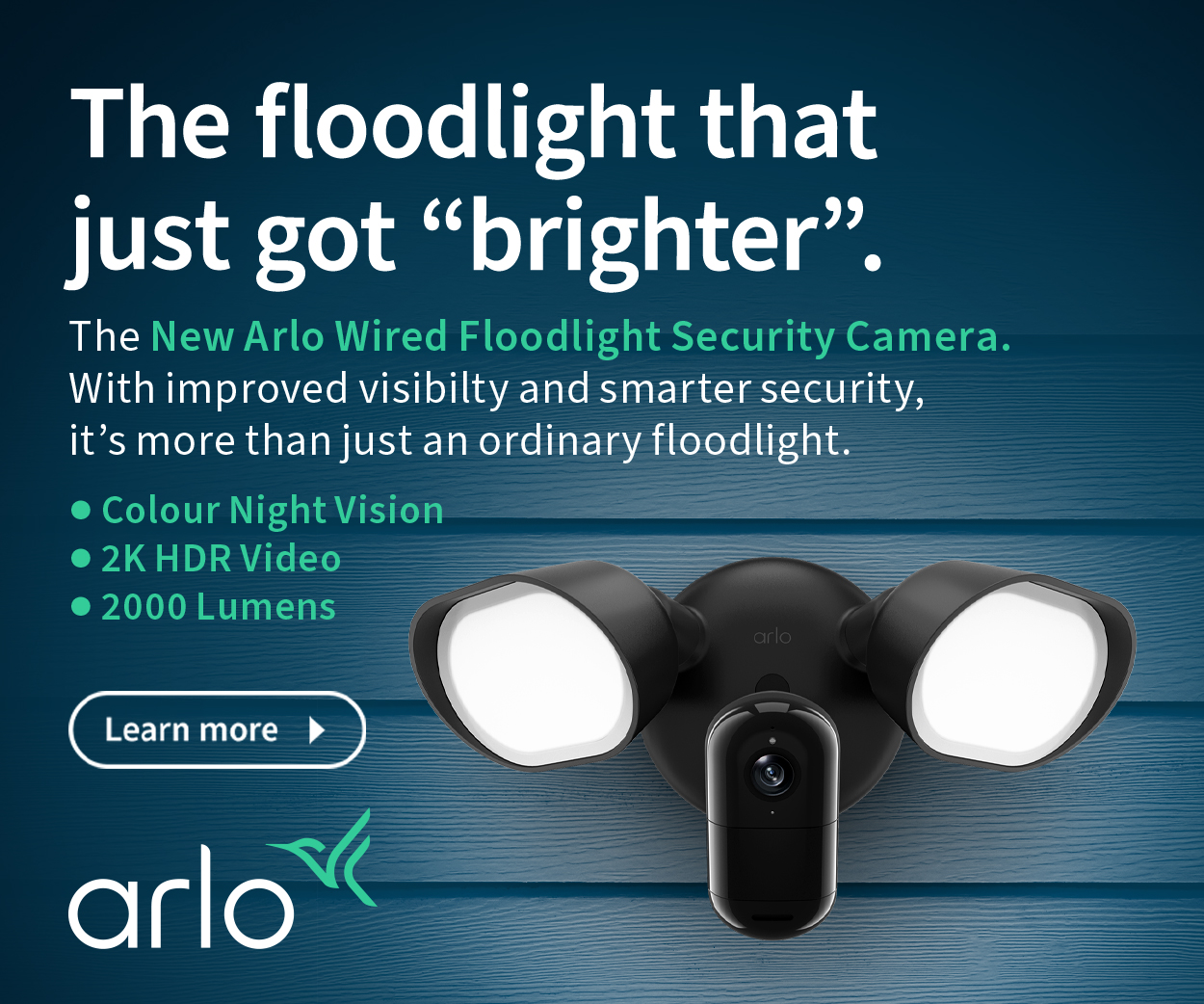Samsung Galaxy S23 Ultra – the world’s best smartphone (review)
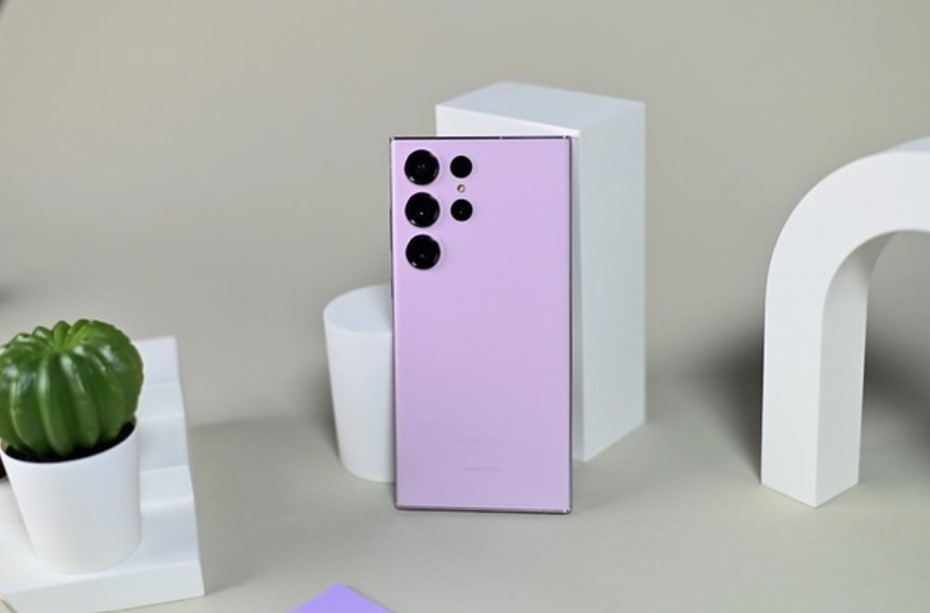
The Samsung Galaxy S23 Ultra is currently, technically, and practically, the world’s best Android phone offering near-perfect performance, battery life, camera quality and a premium user experience.
But, and there is always one, it should be at $1,949/2,249/2,649 for 8/256GB, 12/512GB and 12GB/1TB. Samsung has a reasonably generous trade-in program (of course, the best price will be for late-model Samsung and Apple iPhones), no-interest finance/subscription upgrade programs and Samsung Care+. Some Telcos are offering $0 upfront on 24/36-month plans (effectively no interest), and there are some remnants of the pre-order incentives (but hurry).
What you get (in brief) Samsung Galaxy S23 Ultra Model SM-S918B/DS
- 6.8”, 3088×1440, 8-bit/16M colour, 500ppi, 1-120Hz refresh, 1750 nits/peak, Adaptive AMOLED Gorilla glass Victus 2 protection and S-Pen
- Qualcomm SD8 Gen 2 Pro for Galaxy System on a Chip Max 3.36GHz
- 8 or 12GB RAM (really does not make much difference except to power users)
- 256/512GB or 1TB UFS 4.0 (no microSD)
- Wi-Fi 6E AX, BT 5.3, NFC, Dual Band GPS, Ultra-wideband and USB-C 3.1 Gen with alt DP audio/video.
- All 4G and 5G/low bands, VoLTE, and Wi-Fi calling (carrier dependent). Dual standby SIM and eSIM (There may be some Dual Sim/SIM).
- 200+10+10+12MP+Laser Focus, Wide/3X Telephoto/10X, Telephoto/100X Space Zoom/Ultra-wide and 12MP selfie and premium photography features.
- 5000mAh battery. Approx 1-hour charge 45W capable ($69 extra – no charger supplied), 10-15W Qi wireless charge, and 4.5W reverse Qi charge.
- Stereo speakers and Dolby Atmos downmix to 2.0. Three mics with noise cancelling.
- Standard colours: Green, Phantom Black, Lavender, and Cream
- Samsung online exclusive colours: Graphite, Sky Blue, Lime, and Red
- 163.4 x 78.1 x 8.9mm x 233g. IP68, 1.5m for 30 minutes.
- Android 13 with four OS upgrades and five years of security patches
- 2-year warranty
Difference between Samsung Galaxy S23 Ultra and S22 Ultra (in brackets)
- Qualcomm SD8 Gen 2 Pro (Qualcomm SD 8 Gen 1)
- 200MP wide sensor (108MP) – other sensors the same
- 12MP Selfie (40MP)
- 6.8” AMOLED 2X (same)
- 163 x 78.1 x 8.9mm (163.3 x 77.9 x 8.9)
- 1TB Option (no)
- Gorilla Glass Victus 2 screen protection (Gorilla Glass Victus+)
- IP68 (same)
Compared to the 2021 S21 Ultra, the S23 Ultra has a slightly brighter screen and a 2023 Flagship processor.
The Samsung Galaxy S23 Ultra is not a revolution but a gradual evolution using the latest processor and tech. There is little compelling reason to upgrade from S21/S22 Ultra.
How often do you update? A recent poll reveals:
- 5% every new model every year (on Telco 12-month plan or subscription/upgrade plan)
- 20% every two years (mainly those on commercial lease or Telco plan)
- 30% every three years (mainly outright purchase)
- 45% four years+, mainly due to battery failure or other performance issues. Many are holding off due to 5G confusion and the prospect of higher-cost data plans.
Grey market
Do not buy Model 918, followed by E/EDS (Latam), N (South Korea), 0 (China), U/U1 (USA), and W (Canada).
The B/DS is the only model for Australia, and it will also have some letters after the model for RAM/Storage and Colours.
If tempted, ask for the exact model number and compare it to the Australian extensions for S23, S23+ and S23 Ultra here, and Samsung has more information at Made for Australia.
Approved resellers are:
| Telstra | Optus | Vodafone | JB Hi-Fi | Harvey Norman |
| The Good Guys | Amazon (Samsung Store) | Officeworks | Bing Lee | Woolworths |
| David Jones | Myer | Costco | BIG W | Target |
| Radio Rentals | RT Edwards | Retravision | Betta | Australia Post |
The following are not Samsung Approved and may not sell genuine Australian versions
| Kogan/Dick Smith | Mobileciti | Microless | eXpansys | Etoren | BecexTech |
| dbrand | Big Apple Buddy | Strike | Oz Digital Online | Xtreme Communications | And many more |
Australian Review: Samsung Galaxy S23 Ultra Model SM-918B/DS (Dual standby SIM/eSIM), 12/256GB
| Website | Product page |
| RRP | $1,949/2,249/2,649 for 8/256GB, 12/512GB and 12GB/1TB |
| From | Samsung Online. See Approved resellers above. |
| Warranty | 2-years ACL |
| Made in | South Korea |
| Company | Samsung is a South Korean multinational manufacturing conglomerate headquartered in Samsung Town, Seoul, South Korea. Samsung Electronics (the world’s largest information technology company, consumer electronics maker and chipmaker. |
| More | CyberShack Samsung News and Reviews |
Deep-Dive review format
It is now in two parts – a summary and a separate 300+ line database-driven spec, including over 70 tests to back up the findings. It also helps us compare different phones and features.
We use Fail (below expectations), Passable (meets low expectations), Pass (meets expectations), Pass+ (near Exceed but not class-leading) and Exceed (surpasses expectations or is the class leader) against many of the items below. You can click on most images for an enlargement.
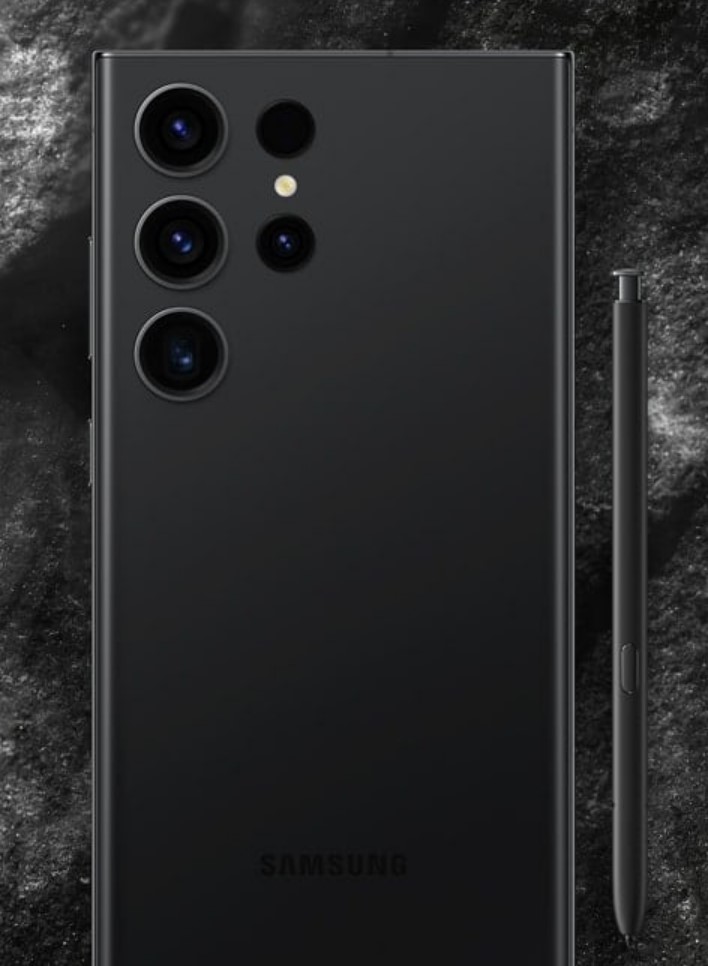
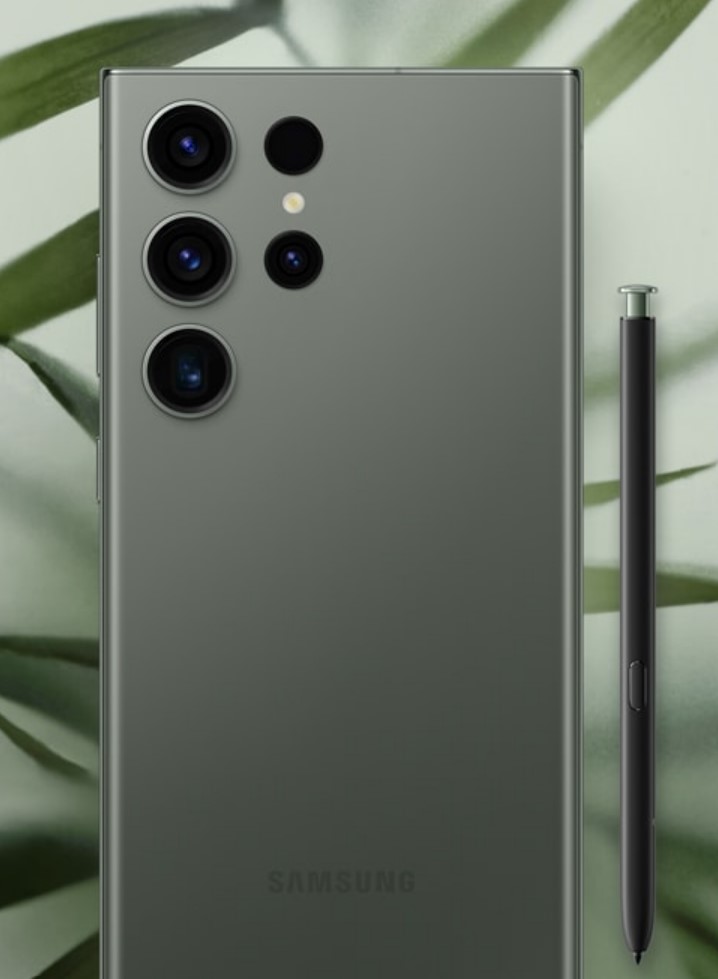
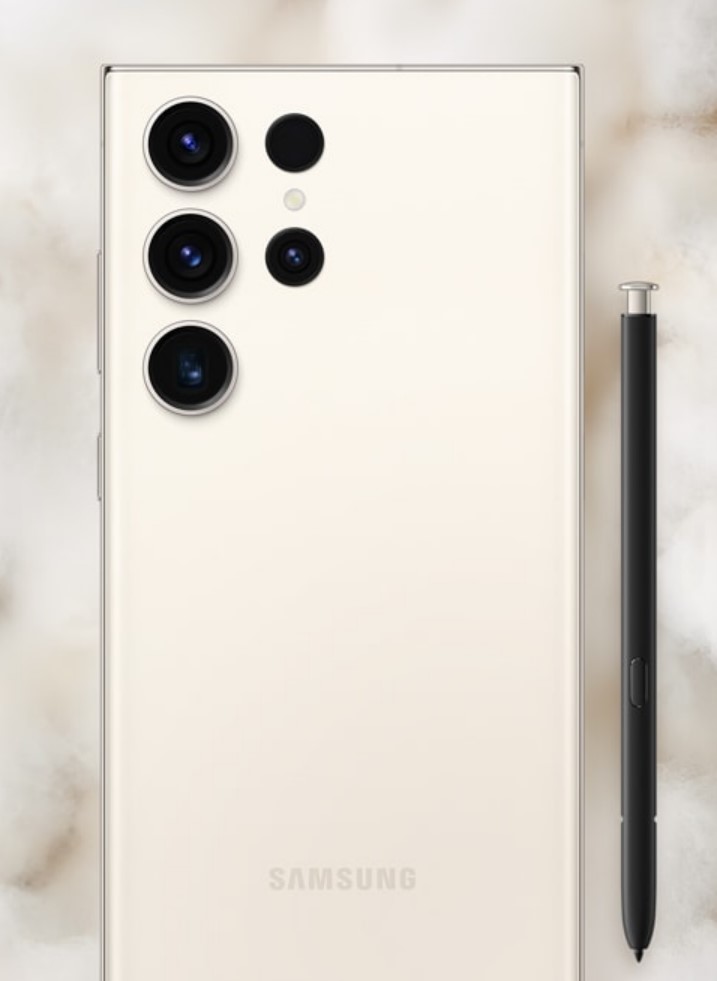
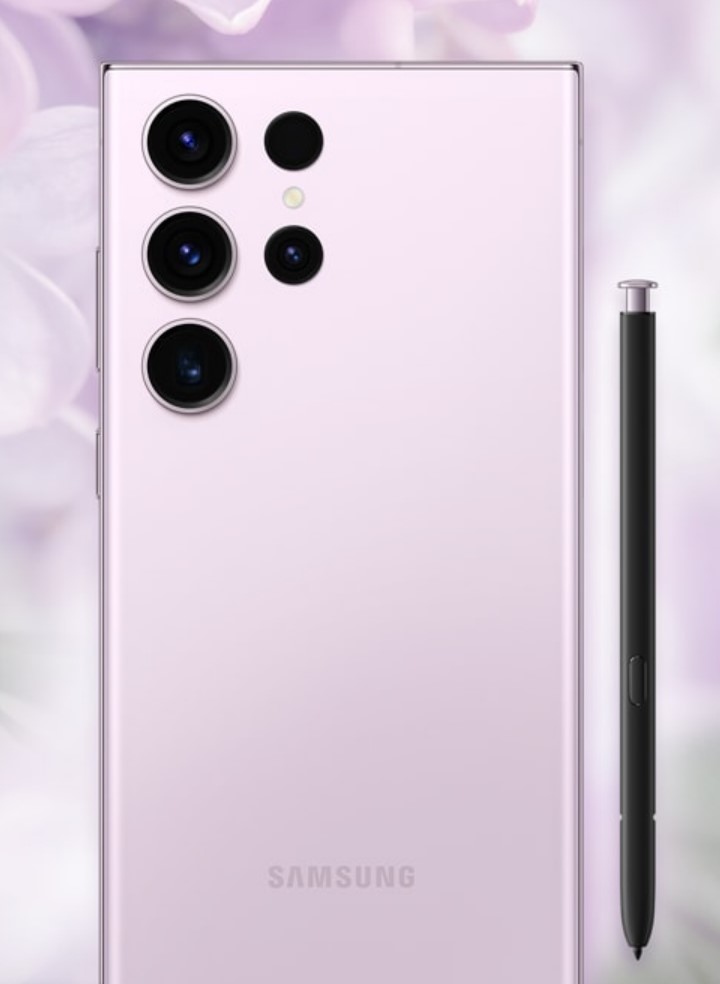
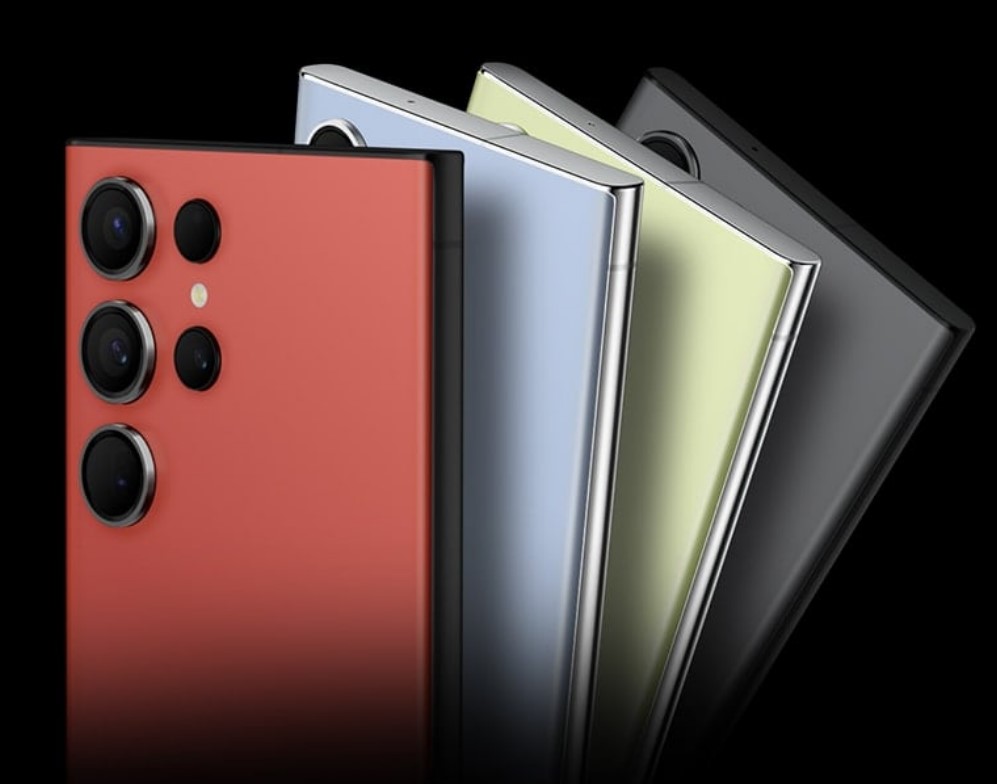
First impression – formidable – Pass+
The Samsung S23 Ultra follows the S21 and S22 Ultra design ques but with flatter (slightly curved edge) glass and a thicker frame.
I am not a great fan of the three prominent rear camera rings that grate horribly when placed on my sand-blasted glass desktop. You are going to need a case to protect them.
Buttons on the right side; hidden earpiece grill and one mic on top; down-firing speaker, USB-C, sim slot, and two mics on the bottom.
Samsung has joined the eco-warrior clan using post-consumer recycled materials in the aluminium frame and packaging.
Why buy it?
It is currently the best, most powerful Qualcomm SD8 Gen 2 for Galaxy, Android smartphone with a full feature set. Some people want that.
If you
- Don’t have to ask the price; it is for you.
- Use, or could use, the S-Pen; it is the only device that meets your needs for on-screen scribbles.
- Absolutely must see the hair on a gnat’s nose one kilometre away; 100X Space Zoom could be useful (if you have a tripod).
- Need 12GB and 1TB of storage.
- Do not want a phone made in China.
If you want everything except the S-Pen and 100X Space Zoom, the Galaxy S23 or S23+ are lower-cost, no-compromise alternatives.

Screen – Pass
The screen is 8-bit/16.7 million colours – the same specs as the 2022 S22 Ultra. Most competitors now have 10-bit/1.07 billion colour screens. It would be reasonable to expect the S23-series, the most expensive Android phones, to have that too. That is why it earns a Pass.
In summary, the evident difference is in its lower image quality when playing HDR/10/10+/Dolby Vision content and a distinct mismatch between the video screen preview and the finished shot. You can read more detail at 8-bit versus 10-bit screen colours. What is the big deal?
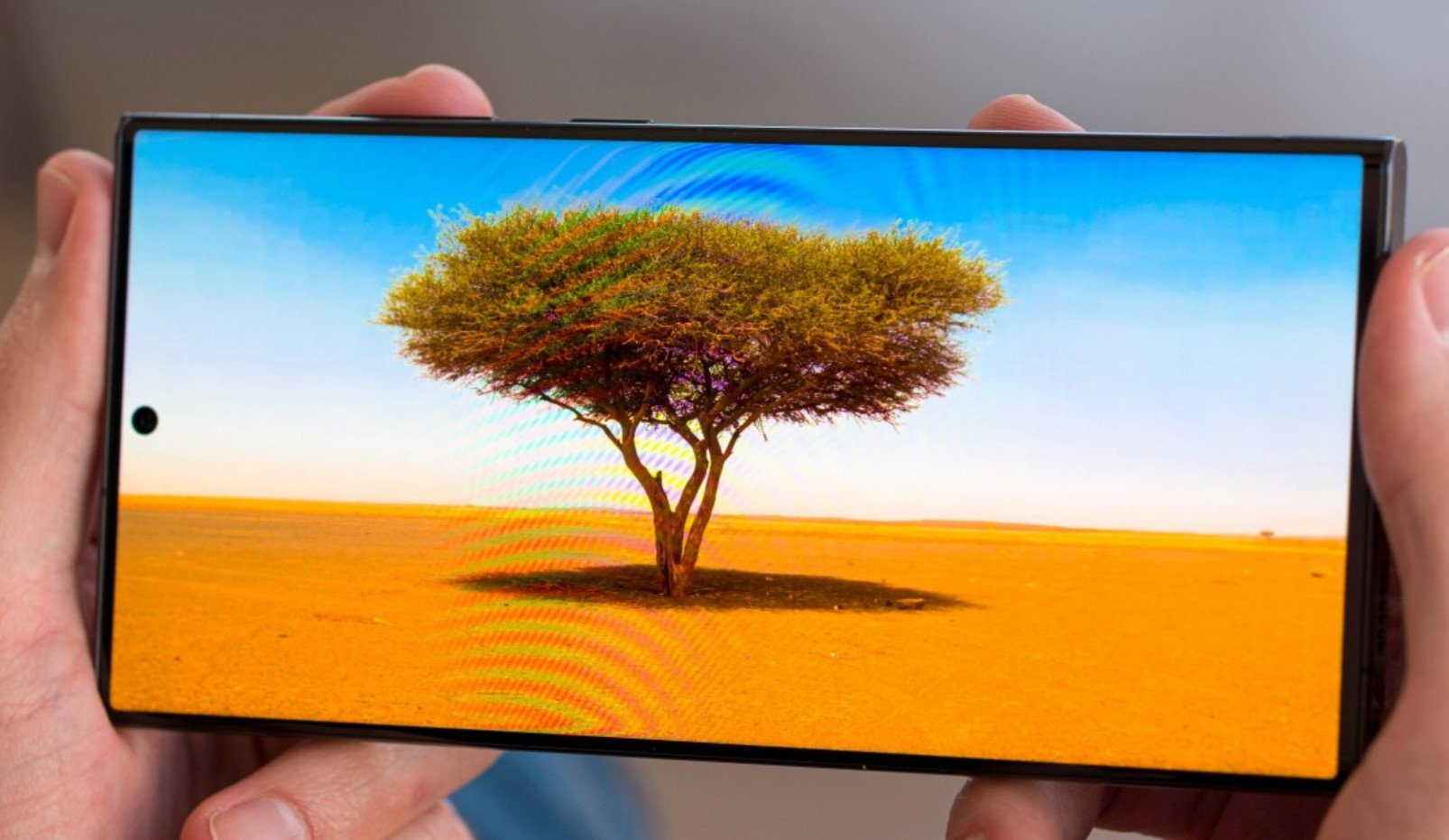
Technically it is a 3088 x 1440, 500ppi, 19.3:9, 8-bit/16.7M colour, Adaptive 1-120Hz refresh, 1750 nits/peak, AMOLED 2X display with Gorilla Glass Victus 2 protection and S-Pen compatibility.
Tests
- Typical Nits: Not stated (tested 510, but you will use it at 200-300 nits)
- High Brightness Mode Max Auto: 1200 nits (1225 in 50% and 1010 whole of the screen)
- Peak Brightness HDR10+:1750 nits in 2/10% of the screen (1700/1725 in 2/10%)
- Colour temperature: Not stated (6690° on Vivid and 6500° on Warm)
- Delta E: Not stated (1.6 out of the box on Vivid but 1.1 on Warm)
- DCI-P3 of 16.7m colours – not 1.07 billion: 100% (110% Natural)
- sRGB of 16.7m colours: 97% Natural and 135% Vivid but Delta E of 2.6
- Contrast: 3,000,000:1 (OLED is infinite as blacks are pure black and whites are pure white)
- Ultrasonic fingerprint under glass: 9/10 positives (good)
Summary: Undoubtedly, it is a good screen – it is just not the best. For 90% of the time, you won’t notice the 8-bit colour. But professionals wanting to make the most of the 200MP camera and videophiles wanting to record and play HDR/10/+ (it does not support Dolby Vision content) will be disappointed.
Gaming
CyberShack is not a gaming expert. But with an Adaptive 1-120Hz display, the power of the Qualcomm SD8 Gen 2 Pro and Samsung’s Game Booster Settings/GOS (Game Optimizing Service), this should be a good gaming device. Gaming experts have said that it is best to use it on mains power (there is a setting to bypass charging to deliver power directly to the device).
We don’t think it is up to the dedicated gaming ASUS ROG standard with its range of clip-on coolers and gamepads, but it is pretty good. Note that it presents Dolby Vision mobile games in vastly inferior HDR10. Why? Samsung refuses to pay for Dolby Vision licences on TVs, monitors and smartphones.
S-Pen – Exceed if you use it. If not, buy an S23 or S23+
The S-Pen is a 4096-pressure level .7mm diameter tip (same as #2 pencil) suitable for general writing. By comparison, a Staedtler colour pencil is about 1.3mm, and 2mm is considered an artist’s pencil.
Removing it from the internal dock activates the Air Command menu to create a note, cut, paste, screen write (when off), Translate and much more (see table below). It also acts as a remote camera shutter button. Replacement pens are $92.
S-Pen functions
| Air Actions | Air view | Live message | Samsung Notes | Screen off memo |
| Smart select | Screen write | Translate | Bixby Vision | Glance |
| Magnify | PENUP | Colouring | AR Doodle | Write on calendar |

Samsung DeX – Pass+ if you use it
DeX (DesktopEXperience) is an Android Desktop on a monitor, PC, or TV. The only other company offering this style experience is Motorola ReadyFor.
You can connect via a USB-C to HDMI cable or Dongle (preferably with pass-through upstream power – see Comms later) or over Wi-Fi to Miracast-compatible (not Chrome) TVs. There is also a PC mode (download Windows App). You can use a BT keyboard and mouse as well.
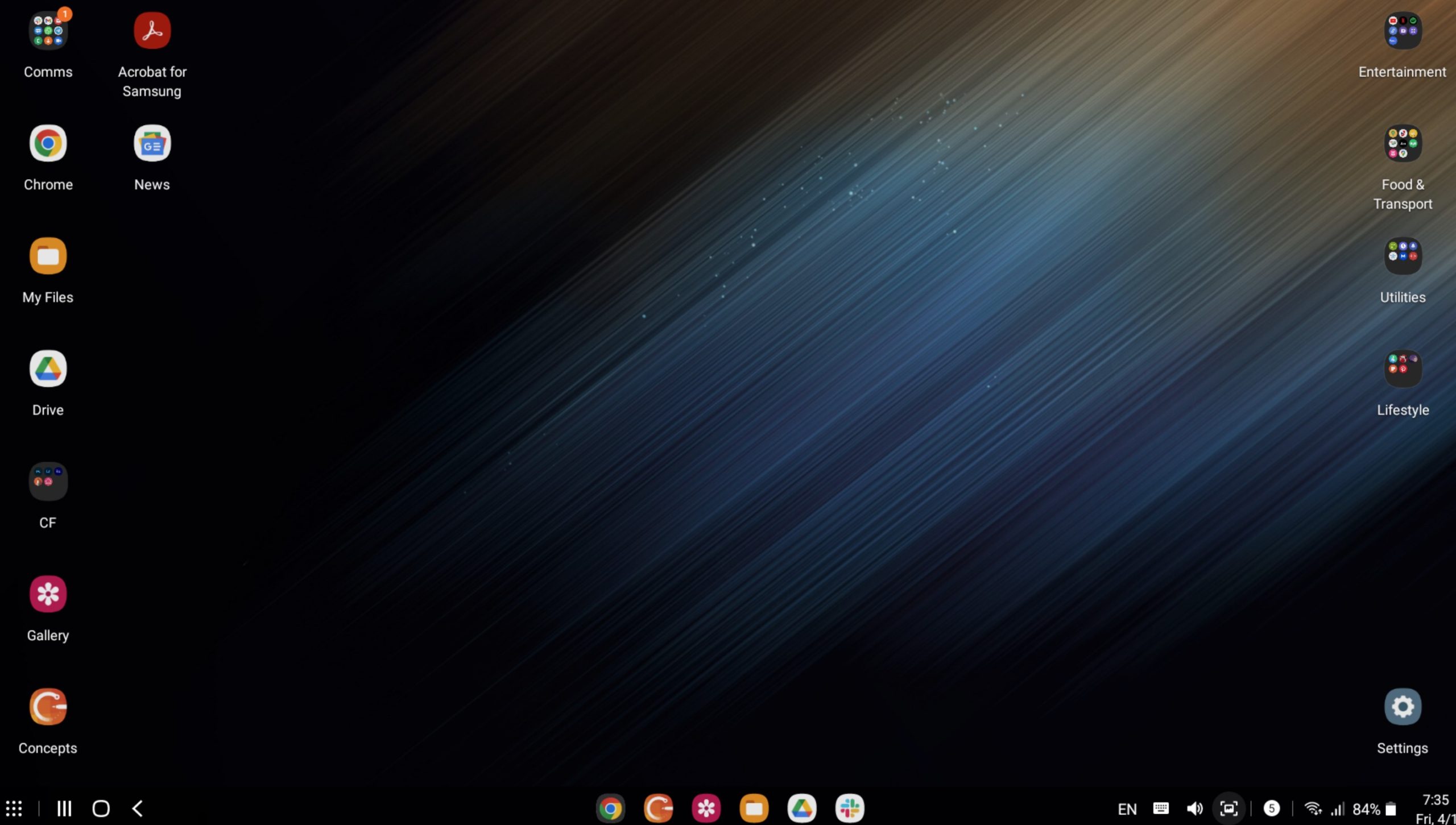
Processor – Qualcomm SD8 Gen 2 for Galaxy, 3.36GHz – Vroom – Exceed
The processor is a slightly tweaked 3.36GHz version made by Samsung for Qualcomm. The standard SoC runs at 3.2GHz, and we expect Samsung’s vapour chamber cooling assists in overclocking this chip. We have a full rundown at Enhanced Qualcomm Snapdragon 8 Gen 2 powers the Samsung Galaxy S23 series.
In brief, it is
- 35% faster and 40% better power management than the SD8 Gen 1.
- 4.35X Faster AI performance.
- 60% INT4 performance-per-watt for sustained AI inferencing.
- 25% faster GPU.
- Spectra ISP can capture 200MP still images at 3.2 Gigapixels per second.
- 8K@60fps video
Geekbench 5 single/multi-core
| Battery standard performance | 1952/5139 |
| Battery Light | 1864/5102 |
| Power standard | 1913/5064 |
| Power light | 1689/4995 |
Standard mode uses the full 3.36GHz Light mode throttles to 2.84GHz. There does not appear to be significant performance loss in Light mode; typical users should select that.
GPU – Exceed
The new ADRENO 740 is, on average, 30% faster than the Adreno 730 and uses less power.
The GPU supports hardware-accelerated ray tracing and a game post-processing accelerator (for bloom, depth of field and motion blur). You can read more in-depth tests and a comparison with the S22 Ultra Adreno 730 here. OpenCL score was 9132, but Vulkan would not run.
RAM – Pass+ (8GB) and Exceed (12GB)
8GB is more than enough for typical users, but it is penny-pinching to offer the premium flagship with this when it has two 12GB options. It makes no difference to typical users.
Storage – Pass 256GB and Exceed 512GB/1TB
It comes with 256/512GB/1TB of UFS 4.0 (next-gen and faster). Buy as much storage as possible, as there is no microSD or external mountable active storage.
Tests
- CPDT sequential read/write (256GB) 1540/459MBps.
We could not test speeds for Samsung T7 Shield Portable SSD – fast and tough (storage review). It was seen in ‘My Files’ as external storage (not live mountable for direct video recording) and could not be speed tested.
Throttling – Passable
Samsung claims it has bought the unchecked throttling of the S21 and S22 under control, but our tests show otherwise.
- Maximum GIPS (billion instructions per second): 348,512
- Average: 302,508
- Minimum: 251,625
- Loss: 24%
- CPU Temp: 50° (good)
Gamers may be concerned that it drops considerably after 8 minutes of a 15-minute test.
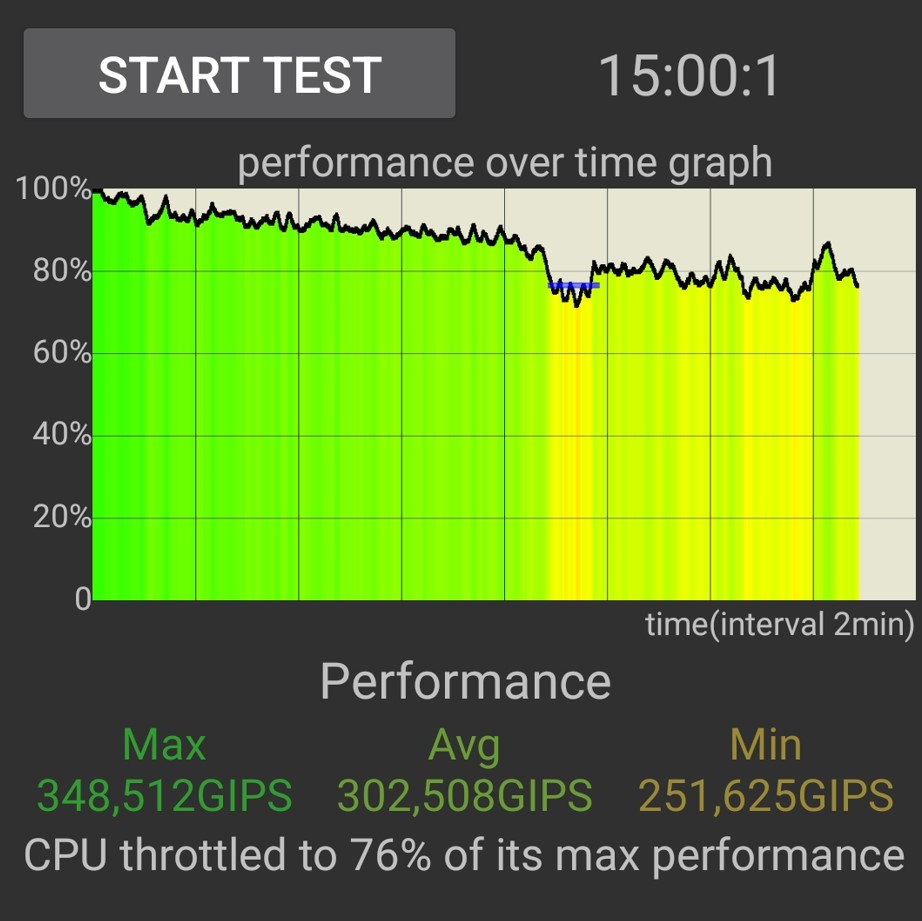
Comms: Pass+
The SoC is Wi-Fi 7 capable, but this is not enabled as the standard is not ratified. It performs well as Wi-Fi 6E AX (and earlier) with a good strong signal out to 10 metres from our reference Netgear Orbi RBKE963 Quad-band Wi-Fi 6E AX 11000 mesh (network review).
It has BT 5.3 LE, multi-point, and you can connect two devices and play audio (requires approved Samsung earphones). It has SBC, AAC, aptX, LDAC and Samsung Scalable Codec (ditto). Read What is a Bluetooth aptX codec, and should you care? (Sound guide).
It is a dual GPS with an accuracy of <4 metres and is acceptable for in-vehicle navigation at speed.
An Ultra-wideband chip may allow it to be used as a future digital car/home key.
USB-C is 3.1 Gen 1 with alt DP audio and video streaming to 4K@60fps. This is perfect for DeX (mentioned earlier), screen mirror and eliminates issues with casting if you use a USB-C to 4K@60Hz HDMI cable, preferably with power-passthrough for viewing/charging.
Again, we express our disappointment (as we did with S21/22) with Samsung’s stance not to allow mountable external SSD for live storage for videographers and vloggers. It can be used for cut-and-paste storage only.
Phone LTE/5G – Pass+
While the review model has a dual SIM and eSIM, we understand that the Australian model has a single SIM and eSIM. A single ringtone may be an inconvenience if you use two SIMS.
It uses the Qualcomm X70 modem and is a world phone. Samsung Australia does not publish LTE and 5G bands, but Telstra has them on its site. It supports all Australian 4G and 5G/Low bands (not mmWave).
Interestingly maximum antenna signal strength is a little lower than the S22 (5pw versus 10pW), and we suspect the slight change in antennal location may contribute to this.
It finds all four towers with strong, usable signals and has Telstra Bluetick for regional use.
Battery – Pass+
The 5000mAh (nominal) battery is rated for a 10V/4.5A/45W. This is significant because a) it does not come with a charger, and b) unless your third-party charger specifically has 10V/4.5A/45 PD charging, it will drop back to 9V/3A/27W – no more. We tested a 5W cable with the following:
- Belkin 60W GaN: 5V/3A/15W, 9V/3A/27W, 15V/3A/45W and 20V/3A/60W – maximum 27W charge
- Wally 60W GaN: PD 5V/3A/15W, 9V/3A/27W, 15V/3A/45W and 20V/3A/60W an PPS 3-11V/3A – maximum 27W
- ChargeASAP 60W GaN: PD 5V/3A/15W, 9V/3A/27W, 15V/3A/45W and 20V/3A/60W and PPS 3.3-6V/3A, 6.5-9V/2A and 9-12V/1.5A – maximum 27W
So, the Samsung Galaxy S23 Ultra needs its own $69 charger (includes USB-C to USB-C 5A cable) to reach full charge rates. We could not find any other brand that has full charge rate compatibility.
Out tests are at 27W, Adaptive screen refresh, 50% screen/volume, and standard performance mode.
- Charge 30 minutes: 45%
- Charge 0-100%: Varies from 1 hour and 6 minutes to 1 hour 20 minutes.
- Charge 5V/2A/10W: 3.5 hours
- Qi charge: Would only charge at 10W despite using a Samsung and Belkin 15W pad and charger. Approx 3 hours.
- Video Loop 1080p/aeroplane mode: 25 hours 21 minutes
- PC Mark Battery 3.0: 17 hours, 45 minutes (typical use)
- Accubattery: 23 hours 13 minutes
- GFX Manhattan 3.1 Battery: Would not run – Out of Memory
- GFX Bench T-Rex (game): 8.02 hours, 6713 frames
- 100% drain screen-on: 6 hours (Accubattery 5.62 hours)
- mA screen-on idle: 350ma
- mA screen-on full load: 1000mA
This represents about 20% better life than the S22 Ultra and will give at least one day for heavy users and two days for typical users (more if using light mode).
Summary: Shame Samsung does not provide a charger, especially as 45W charging only works on its charger. The Out of Memory error should not occur on a Qualcomm SoC, and we assume it is due to early firmware.
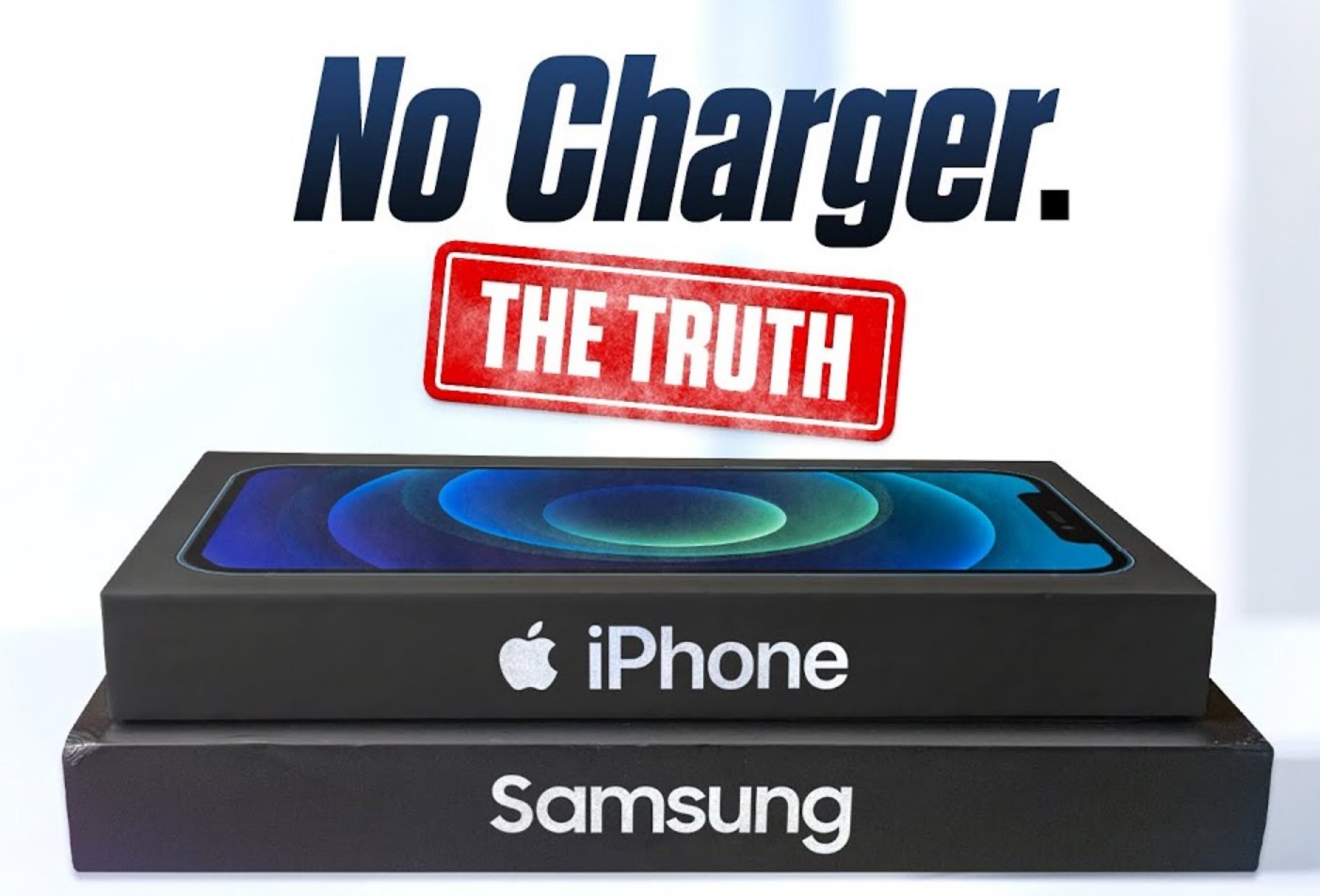
Speakers – Pass
It has a stereo earpiece and a bottom-firing speaker. This has a slightly lower maximum volume at 79dB maximum than the S22 Ultra at 82dB. But the remainder of the system volumes are almost identical.
It has excellent Left/Right separation, and the sound stage is slightly wider than the phone. Dolby Atmos content does give a slight 3D height effect and a wider sound stage.
Hands-free is good with three mics (one for noise cancellation).
Bluetooth 5.3. It is disappointing that it only comes with SBC, AAC, aptX, LDAC and Samsung Scalable Codec (SSC allows for a multi-point connection of two Samsung devices). Apparently, Samsung refuses to pay aptX license fees to Qualcomm to get the full suite of aptX Codecs providing the SSC instead (the same as it refuses to pay Dolby Vision license fees, so it uses the royalty-free HDR10+).
Sound signature – Pass
The Samsung Galaxy S23 Ultra has a slightly more refined sound signature than the S22 Ultra. There is still no low-or-mid-bass. It has slowly building high-bass, and then it is pretty flat to 15kHz and drops to 20kHz.
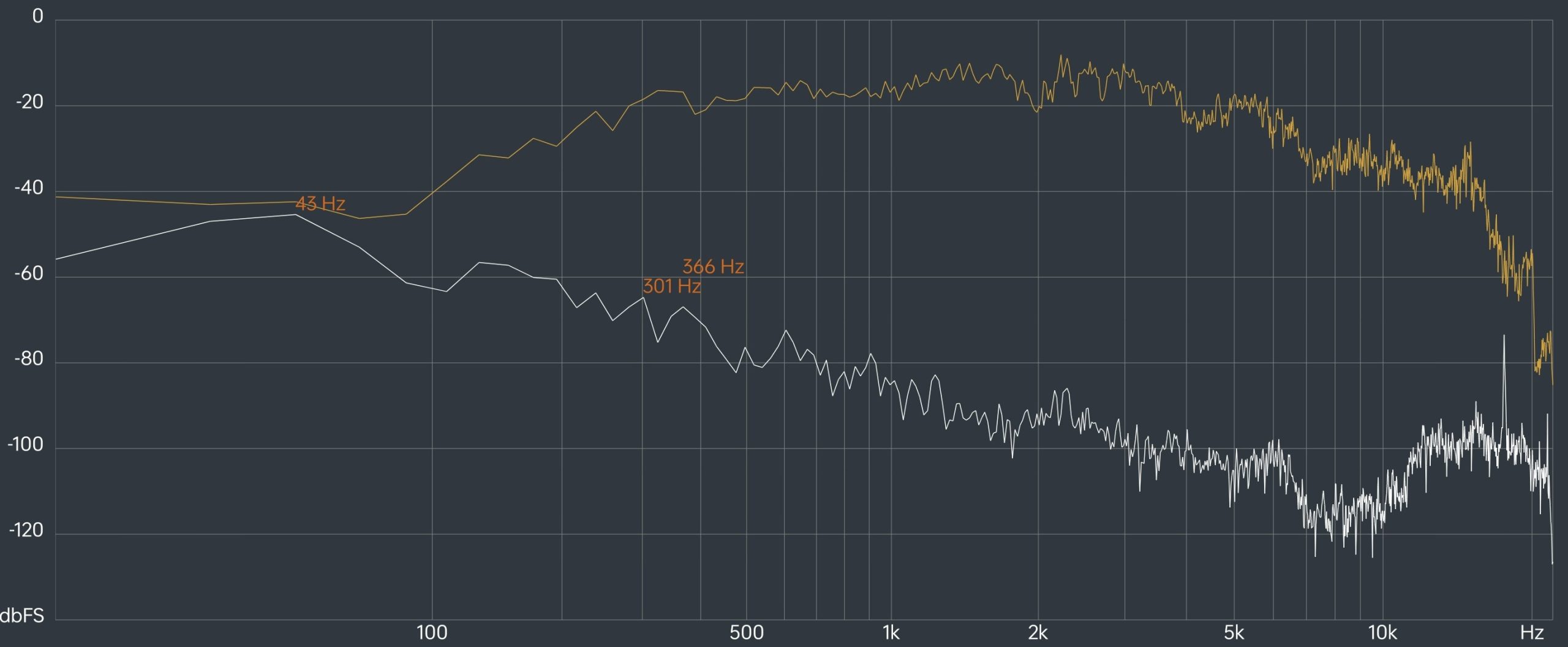
If it only had a little more bass, it would be a neutral signature capable of responding to any EQ setting. As it is (without EQ), it is more Bright Vocal (bass recessed, mid/treble boosted) – for vocal tracks and string instruments.
You can read more: How to tell if you have good music (sound signature is the key – guide)
Build – Exceed
Samsung has an excellent build. Gorilla Glass Victus 2 on the front and rear adds more drop protection, although the torture videos below say otherwise.
Samsung now has a 2-year warranty (it was 1-year), and we applaud it matching what Motorola and OPPO offer as standard (Now, if only we could get it to do that with its TVs).
PBK has a video teardown and durability test (the screen did not survive a waist height drop).
JerryRig has his usual torture test.
You get a 5W USB-C cable inbox but nothing else.
Android 13 – Exceed
It has Android 13 and Samsung’s One UI 5.1. The device gets four OS and five years of security patches.
But there is considerable bloatware as Samsung replicates most core Google productivity apps and adds its Galaxy Store, Galaxy Shop, Facebook, LinkedIn, Spotify, Netflix and more.
In addition, there are many apps that you may or may not use. Many are uninstallable and account for much of the nearly 60GB of lost space.
| AR Doodle | AR Emoji | AR Emoji Stickers | AR Zone |
| Bixby Vision | Digital Wellbeing | Game Booster and Launcher | Link to Windows/Service |
| Live transcribe | Samsung Cloud | Samsung Health | Samsung Internet |
| Samsung Kids | Samsung Notes Add-ons | Samsung Pass | Samsung Push services |
| Samsung TV Plus | Samsung Visit in | Samsung Wallet | Smart Things |
Camera – Samsung Galaxy S23 Ultra
DXOMark (February 17 with the latest firmware) has finished its in-depth camera review. The Samsung Galaxy S23 Ultra rated 10th on the smartphone camera scale behind Google Pixel Pro 7, Apple iPhone 14 Pro Max, Apple iPhone 14 Pro, Apple iPhone 13 Pro Max, Apple iPhone 13 Pro, Google Pixel 7, and some others not sold in Australia. That is not the best result for Samsung and not a giant leap forward from the 2022 Galaxy S22 Ultra.
In summary, it was let down by a loss of detail, low contrast, noise, fusion artifacts, exposure variances, white balance, zoom and bokeh. The good news is that these are all issues that firmware updates for AI Post-processing should fix (if Samsung elects to fix and it usually does).
Its worst score was inaccurate previews where the screen (viewfinder) was not the same colour as the finished image. We noticed this, too, as Samsung only uses an 8-bit/16.7 million colour screen and 12-bit JPEG processing (up to 16-bit in 20MP RAW mode).
In our opinion, DXOMark ratings are technically accurate but not necessarily the best indicator of Joe and Jane Average’s camera use (if they could afford this). We test as a point-and-shoot device.
Samsung touts the 200MP .6um main sensor as the ultimate. It is good, but most will use the 12.5MP AI post-processed, 2.4um binned mode that produces a more appealing image. All our handheld 200MP shots were blurry – the tripod ones were not. You can read more What is the Samsung ISOCELL HP2 200MP sensor in the Galaxy S23 Ultra?
It also touts two telephoto lenses – one with 3X Optical Zoom and F/2.4 and the other a periscope design with 10X Optical Zoom and F/4.9. This can produce a 100X hybrid Space Zoom – a nice gimmick that needs a tripod, or you get a very blurry image.
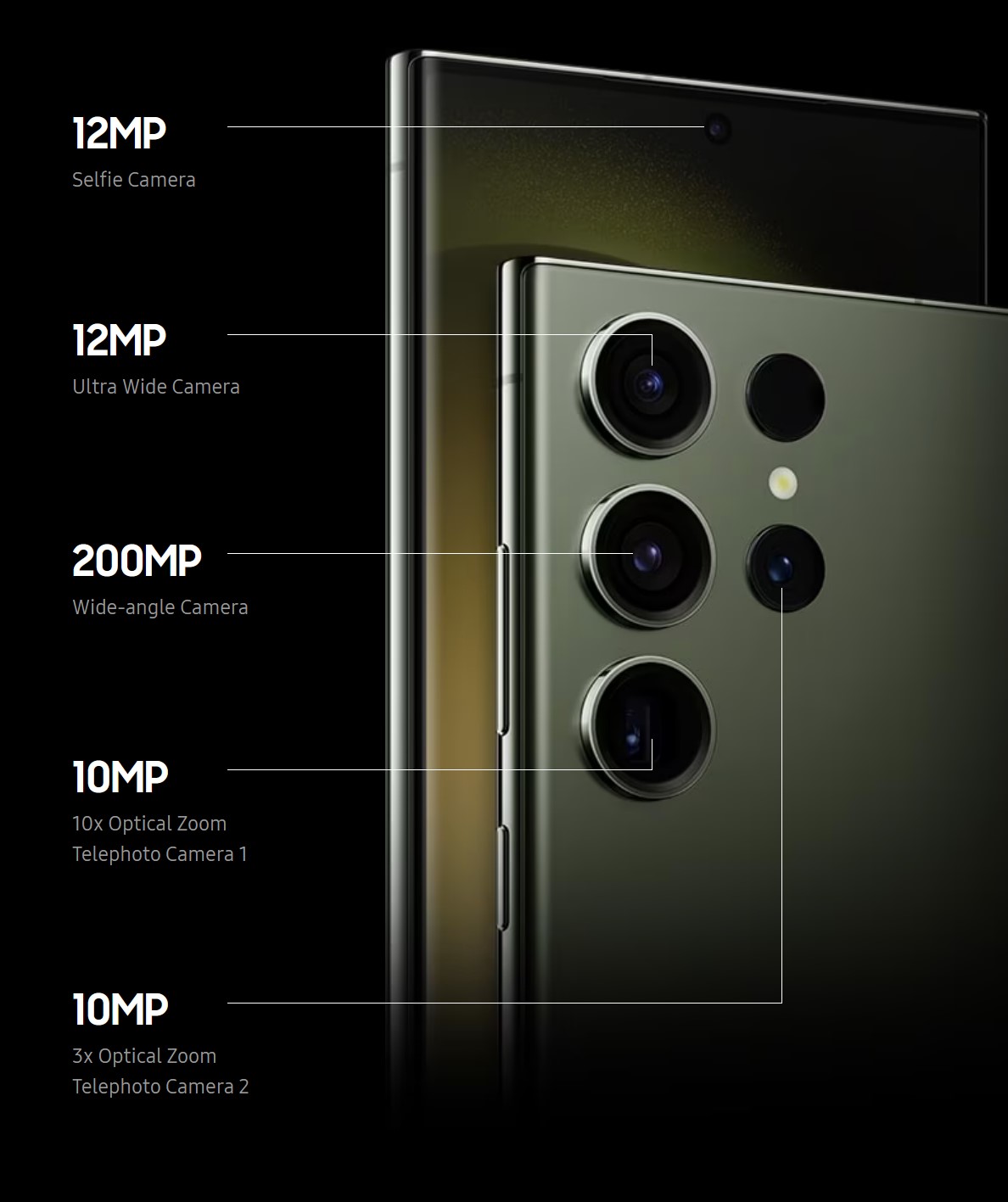
Samsung has a few nice features:
- Night Portrait (bokeh)
- Night Video
- Astro Photo and Hyperlapse
Camera comments (all shots with a tripod)
- 1X Day Primary 200MP sensor binned to 12.5MP: As good as it gets. The colours are saturated (do we care if it is not quite right?). Good details in the background, shadows, and highlights.
- 3X Day 10MPx3: natural if slightly saturated colours, good detail and no noise
- 10X Day 10MPx10: Pushing its limits with the beginnings of a noisy background – still pretty good with excellent colour and foreground details.
- 100X Space Zoom: At the limit of the sensor’s capability – we reshot this several times to see if we got different results.
- Ultra-wide: 12.5MP sensor: Excellent shot, but you can tell it is a different sensor from the primary.
- 200MP: 3X
- Macro 50MP sensor: excellent details and colours and not as critical about 4cm focus distance.
- Indoor office light: Good colours and good details but a slightly out-of-focus background
- Bokeh Depth: Saturated colour, good foreground detail and bokeh background. Bokeh can be adjusted – this shot was a little extreme.
- Dark <40 lumens: The standard mode (not night mode) is excellent, turning night into day with good colour and picking up details from the monitor screens.
- Night mode: Saturates the colour (to its detriment) and adds missing details.
- Selfie: The 12MP produces an 8.6-10MP image depending on the Field of View (cropped). It has natural skin tones, good detail and a range of filters to enhance any image.
- Video (we are not video experts):
- Primary sensor: You can shoot at 8K@30fps OIS), 4K@60/30fps with OIS/EIS, and the day/office light results are excellent.
- Ultrawide sensor: You can shoot 4K@30fps with OIS/EIS
Sample shots




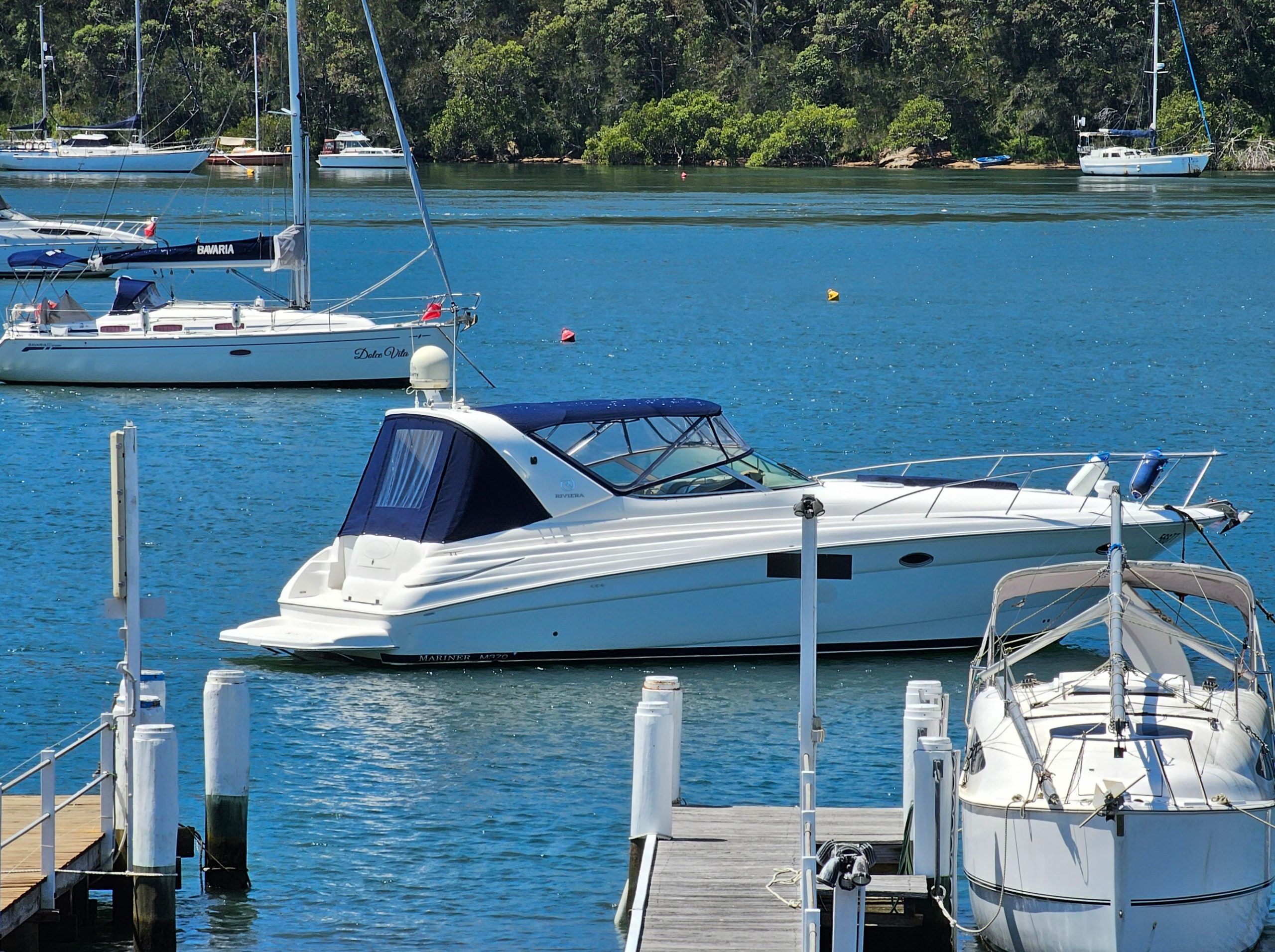
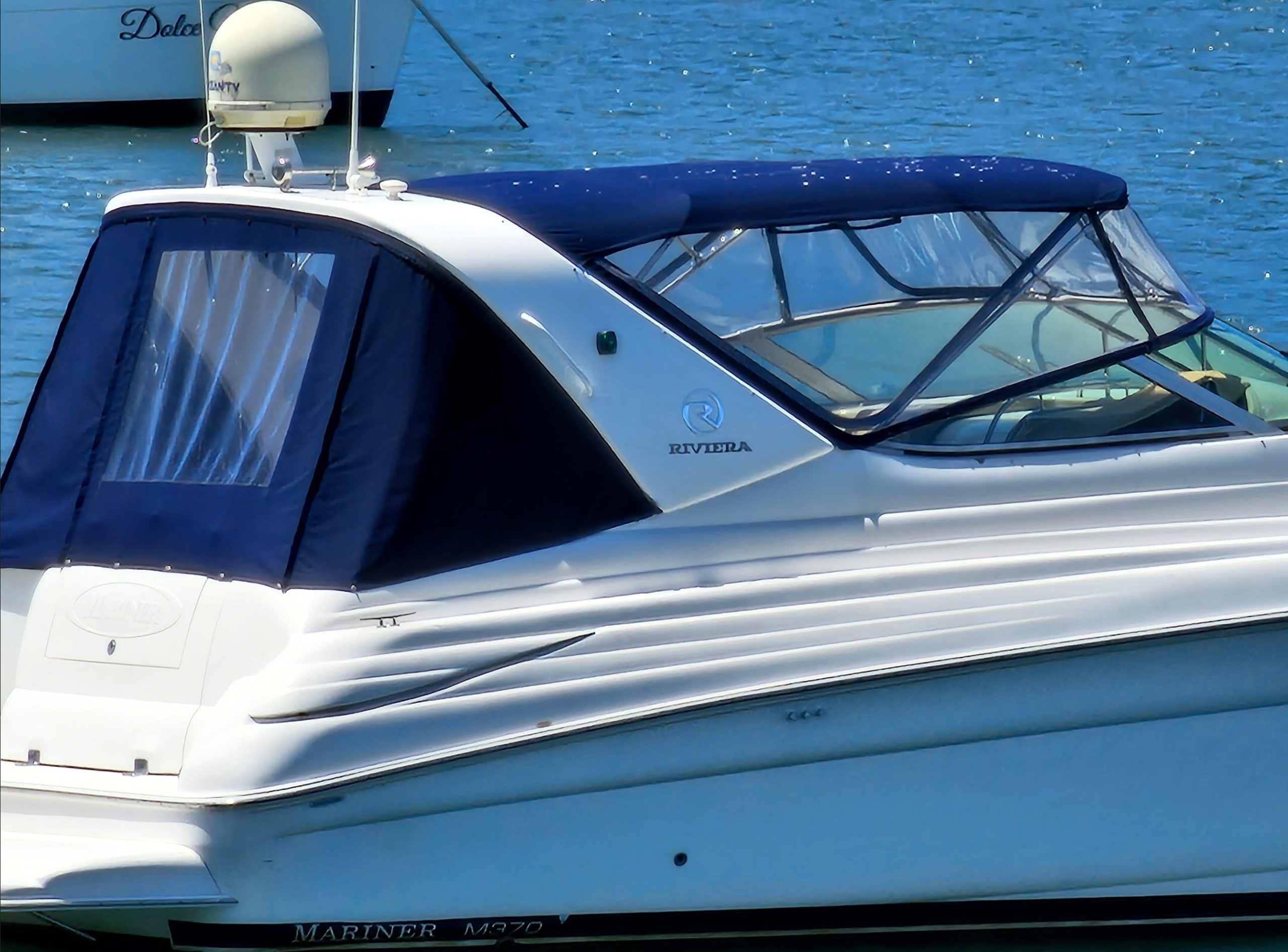
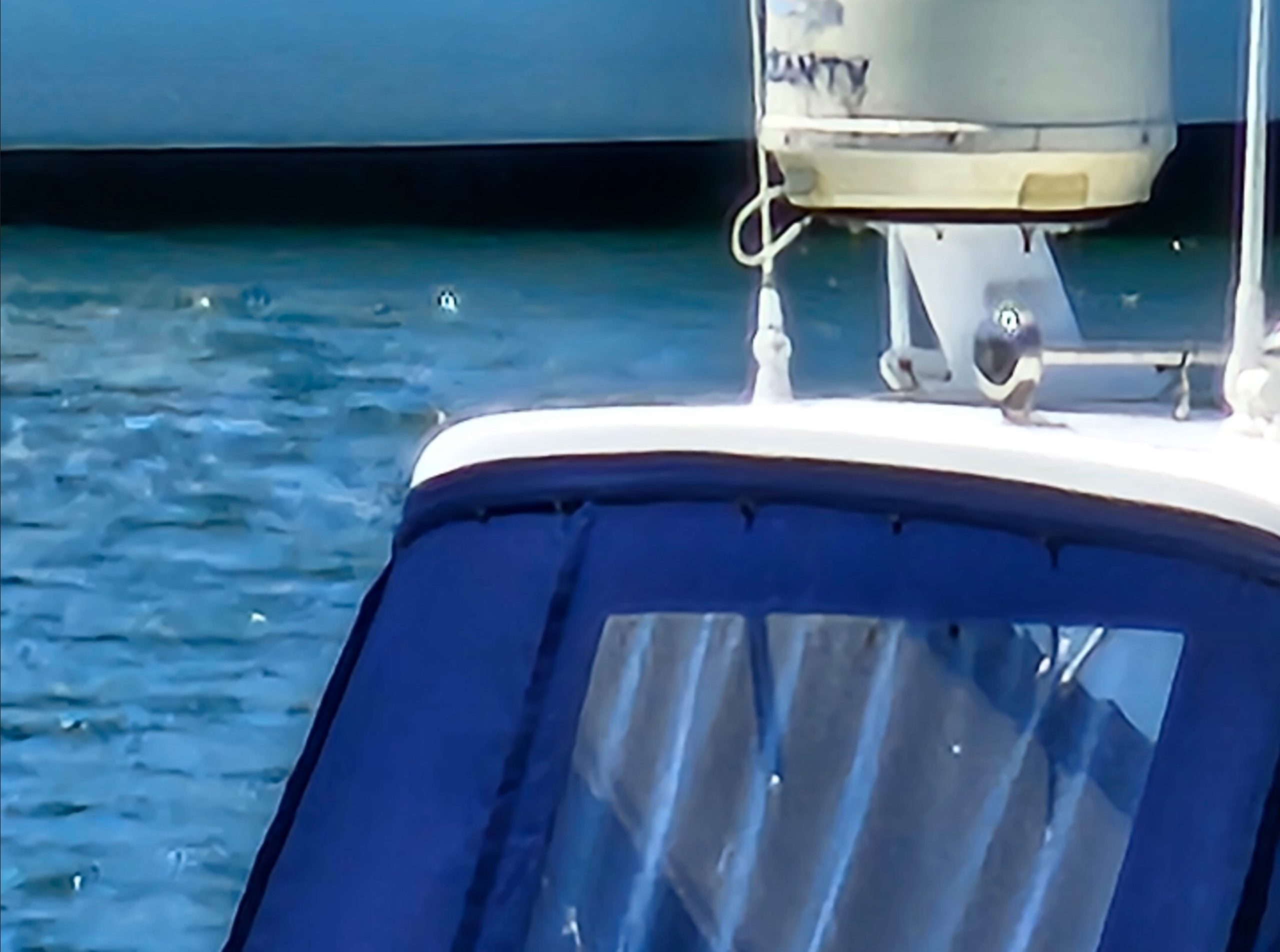

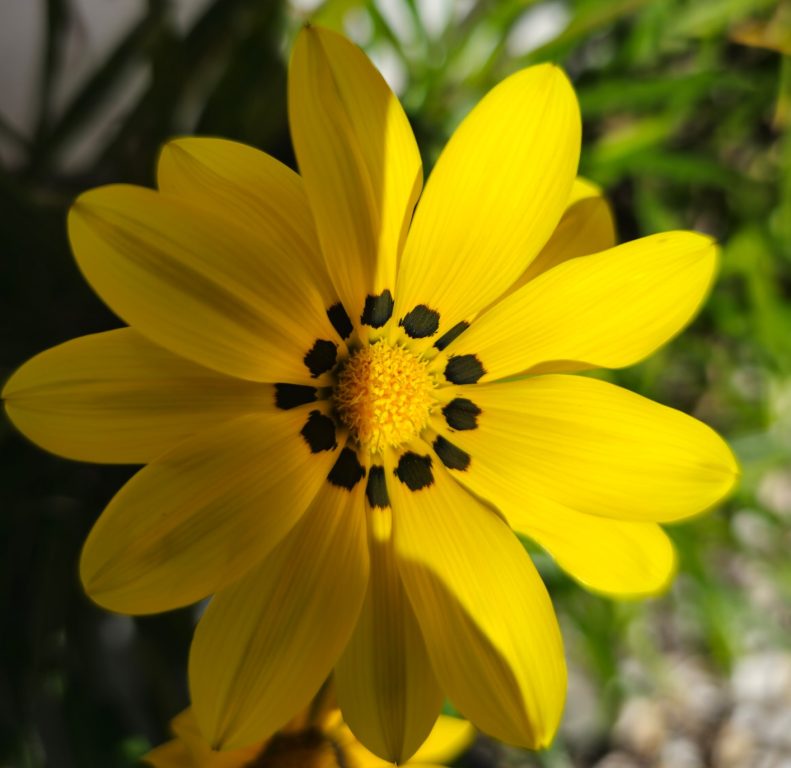

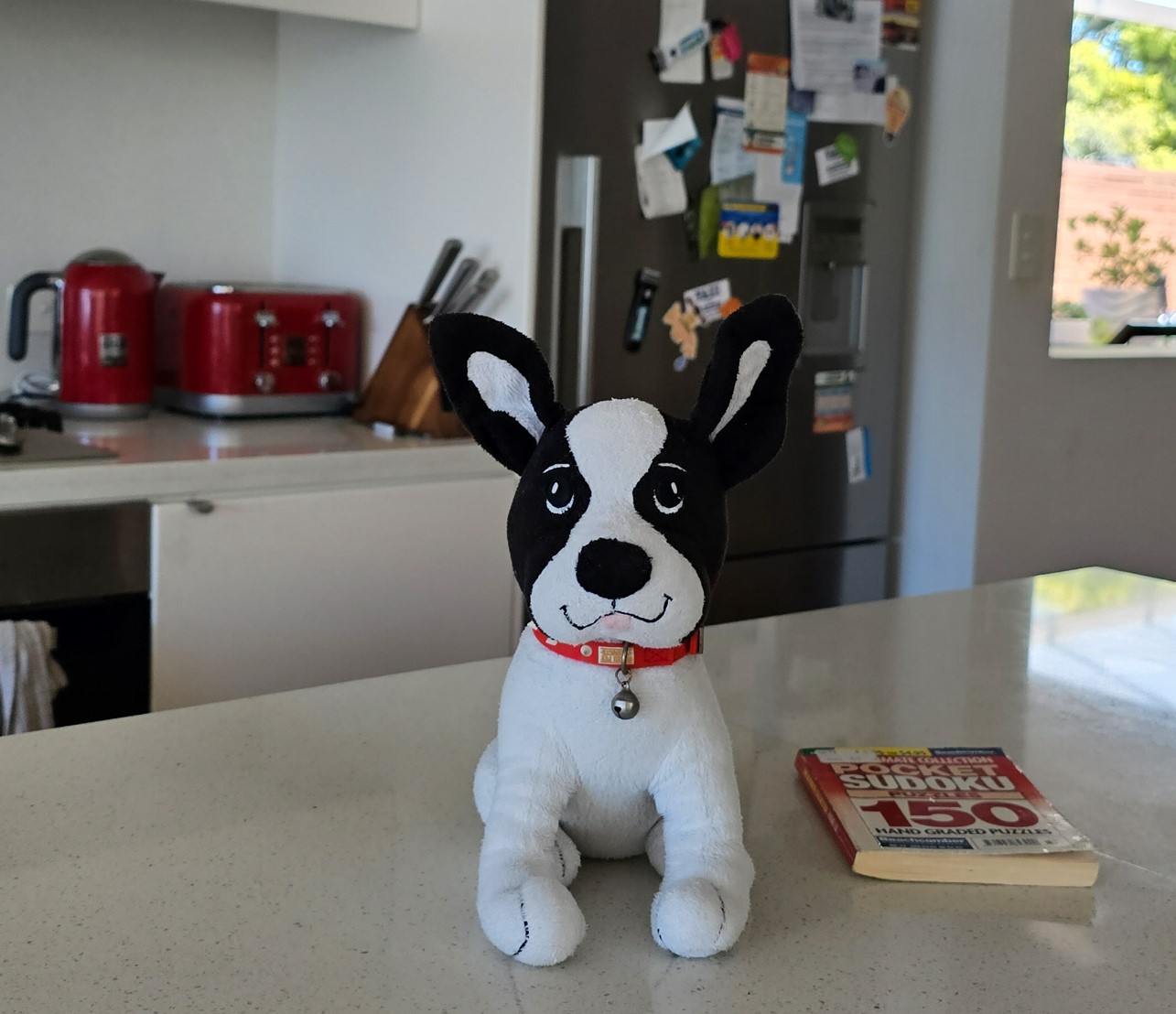

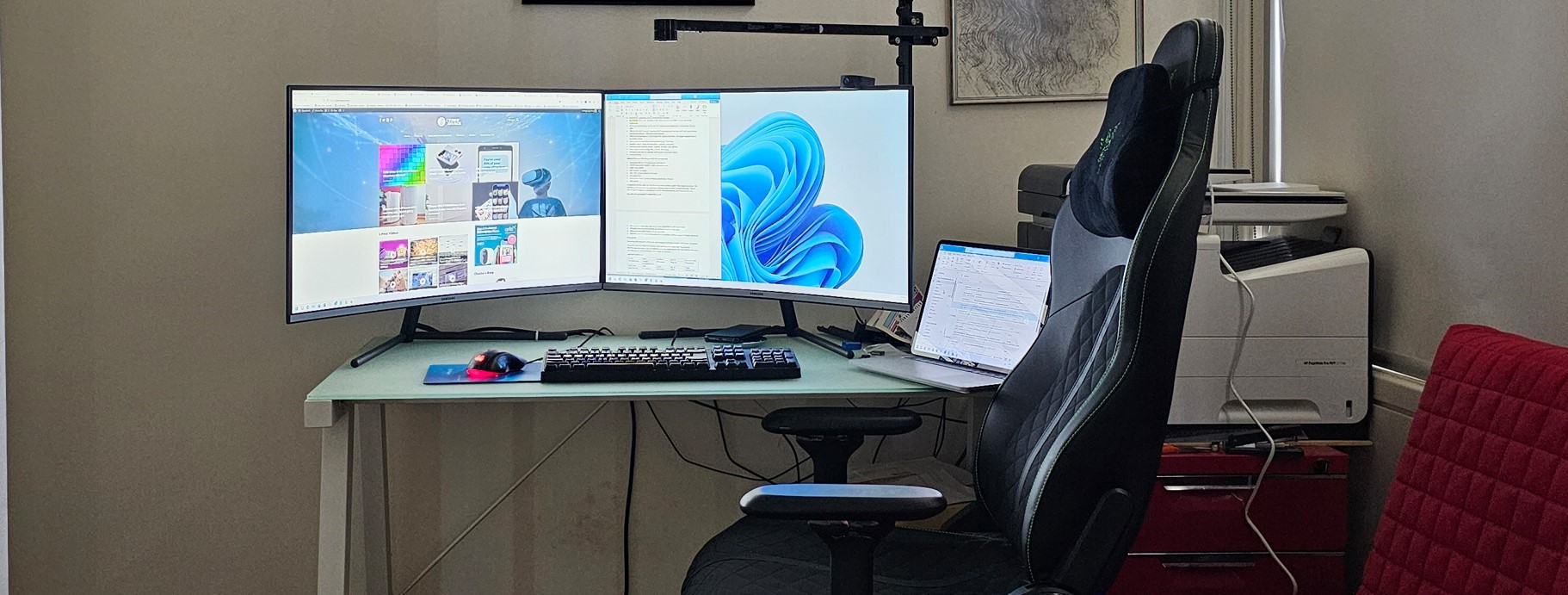
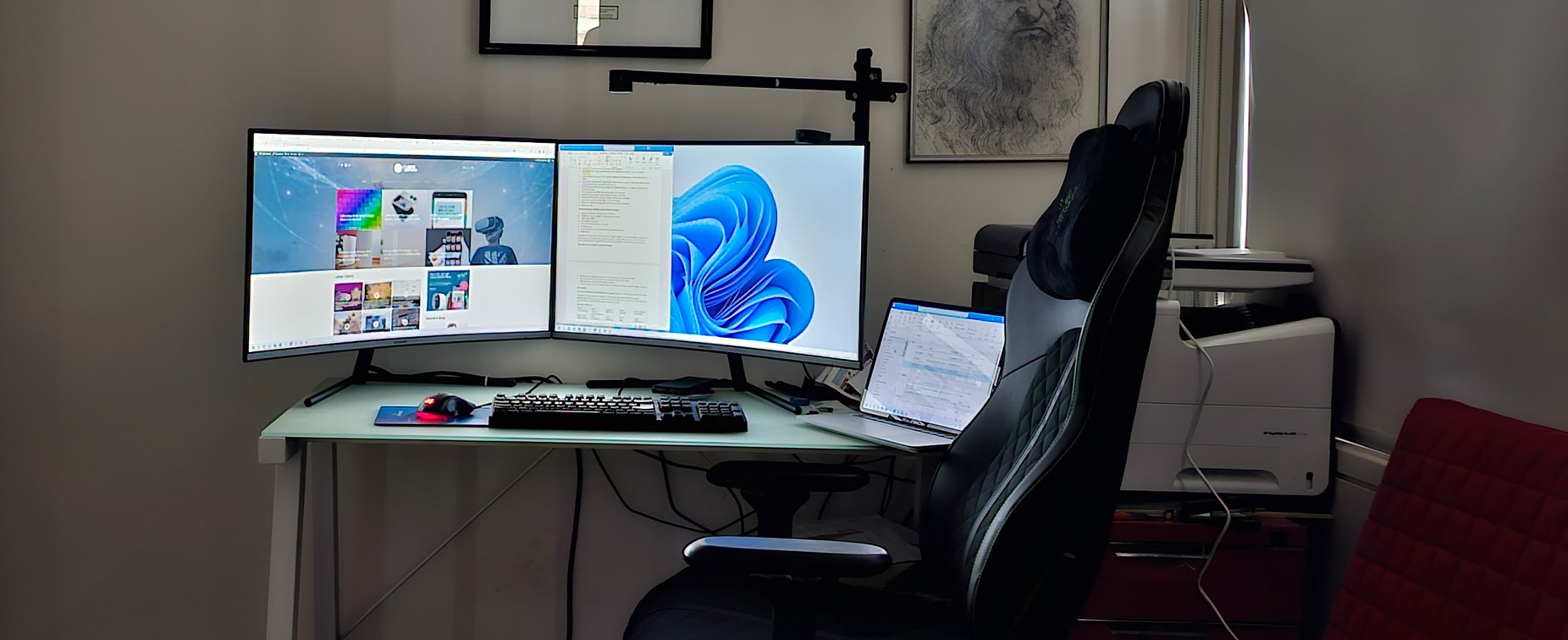
If we rate this as a point-and-shoot camera with benefits, then Joe and Jane Average will be deliriously happy. Great day, office and night shots, excellent detail, good dynamic range, and it is hard to take a bad picture. You need a tripod if you use more than 10X Zoom or 50/200MP shots.
CyberShack’s view – Samsung Galaxy S23 Ultra is the world’s best Android smartphone.
It has addressed many of the minor niggles we had with the S21 and S22 Ultra (still mighty good smartphones), particularly in areas such as battery life. It is evolution, not revolution, that we see here. Unfortunately, sales are driven by innovation, and despite bragging rights for a 200MP primary sensor, it still shoots at 12.5MP.
But it is not all a bed of roses.
- We can’t understand why Samsung stick to an 8-bit/16.7m colour screen which is a deal breaker for professional users that need colour accuracy from the preview to the finished shot.
- The inability to mount an external SSD as live storage (that you can record to) is a major drawback for videographers and vloggers.
- No charger inbox ($69) when it appears to be the only way to get 45W charging. Similarly, limiting non-Samsung QI chargers to 10W.
- Limiting Qualcomm codecs to aptX denies typical users access to high-definition music. Sure, the Samsung scalable codec does a decent job but only on compatible earphones.
- No Dolby Vision decode favouring Samsung’s royalty-free HDR10+ decode means vastly inferior results for DV and DV HDR games.
- And while One UI 5.1 is good, the 60GB of bloatware needs to be addressed. Samsung is becoming more of its own ecosystem (like Apple), only offering all its features to those in its tent.
Despite all these issues, it is still the only Android uber-premium flagship game in town, and its great points outweigh its foibles (unless these are important to you).
Me, I would really suggest that Joe and Jane Average look more closely at the S23 or 23 Plus (these are identical apart from screen size) and really only miss the 100X Space Zoom (that you probably won’t use anyway).
Rating Explanation
- Features: 90 – but no charger and 8-bit screen lose points
- Value: 75 – It costs what it costs, but it is only for those who can afford it. The 8/256GB Base unit is to allow it to advertise a lower RRP.
- Performance: 90. This may be the most powerful Android processor, but it loses points for throttling and has no mountable external storage
- Ease of Use: 90. Excellent 2+4+5 Warranty/OS Upgrades/Security patches and Samsung UI is easy to use – just remove all that bloatware.
- Design: 80 – it is still a glass slab with no distinguishing features besides the S Pen.
Samsung’s premium glass slab offering with an S-Pen and DeX
200MP camera is about bragging rights but generally lives up to the promise
Fast processor, RAM and storage
Excellent battery life
2+4+5 warranty/OS upgrades/security patches
Con
No charger inbox and only up to 30W charging from third-party chargers
Base model 8/256GB – this is supposed to be a premium phone.
An 8-bit/16.7m colour screen is not appropriate for a premium flagship
No mountable external SSD for videographers and vloggers use
No compelling reason to upgrade from S21 or S22 Ultra
CyberShack Smartphone comparison v 1.1 (E&OE)
| Brand | Samsung |
| Model | Samsung Galaxy S23 Ultra |
| Model Number | SM-S918B/DS |
| Price Base | $1949 |
| Price base | 8/256 |
| Price 2 | 12/512/$2249 |
| Price 3 | 12/1TB/$2649 |
| Warranty months | 24 |
| Tier | Upper Premium |
| Website | Here |
| From | Samsung Online and approved retailers |
| Country of Origin | South Korea |
| Company | Samsung is a South Korean multinational manufacturing conglomerate headquartered in Samsung Town, Seoul, South Korea. Samsung Electronics (the world’s largest information technology company, consumer electronics maker and chipmaker. |
| Test date | 10-25/02/23 |
| Ambient temp | 25° |
| Release | February 2023 |
| Other models not for Australia (Don’t buy) | Do not buy 918 followed by B (Global), E/EDS (LatAM), N (Korea), 0 (China), U/U1 (USA), W (Canada). |
Screen
| Size | 6.8″ |
| Type | LPTO AMOLED |
| Flat, Curve, 2D, 3D | 3D Edge |
| Resolution | 3088 x 1440 (defaults to 2316x1080p) |
| PPI | 500 |
| Ratio | 19.3:9 |
| Screen to Body % | 90% |
| Colours bits | 8-bit/16.7m |
| Refresh Hz, adaptive | 1-120MHz screen and 240MHz touch in game mode only |
| Response 120Hz | Not stated, but approx. 2ms GTG |
| Nits typical, test | Not stated (510) |
| Nits max, test | 1200 HBM (1225 in 50% and 1010 in 100%) 1750 HDR10+ (1700 in 2% and 1725 in 10%) |
| Contrast | Infinite |
| sRGB | Natural 97% |
| DCI-P3 | Vivid 100% of 16.7m colours or about 60% of the wide colour gamut |
| Rec.2020 or other | RGB and temperature adjustment |
| Delta E (<4 is excellent) | 1.6 out of the box but 1.1 on warm |
| HDR Level | It plays up to HDR10+, locking the refresh rate to 120Hz. |
| SDR Upscale | No |
| Blue Light Control | Yes |
| PWM if known | All AMOLED use PWM 250Hz approx. |
| Daylight readable | Yes |
| Always on Display | Yes |
| Edge display | Yes |
| Accessibility | Full suite of enhancements |
| DRM | Widevine L1 1080p HDR |
| Gaming | Game mode |
| Screen protection | Gorilla Glass Victus2 |
| Comment | Disappointing that it is not 10-bit/1.07B colours. This has a true adaptive screen that ranges from 1-120Hz to help conserve battery. |
Processor
| Brand, Model | Qualcomm SD8 Gen 2 Samsung Edition Pro |
| nm | 4 |
| Cores | 8-core – 1×3.36GHz + 2×2.8GHz + 2×2.8 GHz + 3×2.0 GHz |
| Modem | X70 |
| AI TOPS | Over 30 |
| Geekbench 5 Single-core | 1952 |
| Geekbench 5 multi-core | 5139 |
| Like | About 30% faster than the S22 Ultra |
| GPU | Adreno 740 |
| GPU Test | |
| Open CL | 9132 |
| Like | |
| Vulcan | Would not run |
| RAM, type | 8GB or 12GB LPDDR5X |
| Storage, free, type | 256GB (209GB Free) 512GB/1TB UFS 4.0 |
| micro-SD | No |
| CPDT internal seq. Read MBps | 1540 |
| CPDT internal seq. write MBps | 459 |
| CPDT microSD read, write MBps | N/A |
| CPDT external (mountable?) MBps | Won’t test – seen as external storage but can’t mount as internal storage. |
| Comment | Videographers and vloggers will soon run out of space without mountable storage, seen as internal storage. |
| Throttle test | |
| Max GIPS | 348,512 |
| Average GIPS | 302,508 |
| Minimum GIPS | 251,625 |
| % Throttle | 24% |
| CPU Temp | 50° |
| Comment | Gamers may be concerned that it drops considerably after 8 minutes of a 15-minute test. |
Comms
| Wi-Fi Type, model | Qualcomm Fast Connect 7800 system Wi-Fi 6E (capable of Wi-Fi 7 in the future) |
| Test 2m -dBm, Mbps | -29/2400 6GHz |
| Test 5m | -39/1921 6GHz |
| Test 10m | -52/1729 6GHz (15m dropped back to 5GHz) |
| BT Type | 5.3 |
| GPS single, dual | Dual accuracy <4m |
| USB type | 3.2 Gen 1 (5Gbps) |
| ALT DP, DeX, Ready For | Cable and Wireless DeX |
| NFC | Yes |
| Ultra-wideband | Yes |
| Sensors | |
| Accelerometer | Yes – combo with Gyro |
| Gyro | Yes – combo with Gyro |
| e-Compass | Yes |
| Barometer | Yes |
| Gravity | |
| Pedometer | |
| Ambient light | Yes |
| Hall sensor | Yes |
| Proximity | Yes |
| Other | |
| Comment | A full suite of comms and excellent performance from them all. |
LTE and 5G
| SIM | Single SIM and eSIM |
| Active | Dual standby |
| Ring tone single, dual | Single |
| VoLTE | Carrier dependent |
| Wi-Fi calling | Carrier dependent |
| 4G Bands | Bands not disclosed. Telstra lists: 1, 2, 3, 4, 5, 7, 8, 9 13 18, 19, 20, 25, 28, 38, 39, 40, 41, 66 |
| Comment | All Australian and most world bands |
| 5G sub-6Ghz | Bands not disclosed. Telstra lists: N1, 2, 3, 5, 7, 8, 12, 20, 25, 28 38, 40, 41 66, 77, 78 |
| Comment | All sub-6Ghz and 5G low bands |
| mmWave | No |
| Test Boost Mobile, Telstra | |
| UL, DL, ms | 30/20/32ms |
| Tower 1 -dBm, fW or pW | -83/1.6-5pW |
| Tower 2 | -86/1.3-2.5pW |
| Tower 3 | -92/300-500fW |
| Tower 4 | -98/70-250fW |
| Comment | Slightly lower signal strength than the S22 Ultra+ on four towers. A phone that should be fine for rural and regional use. |
Battery
| mAh | 5000 |
| Charger, type, supplied | No charger but 5A USB-C-USB-C cable supplied |
| PD, QC level | PD 3 45W |
| Qi, wattage | QC 2.0 |
| Reverse Qi or cable | 4.5W |
| Test (60Hz or adaptive screen) | Adaptive |
| Charge % 30mins | 45% |
| Charge 0-100% | 1 hour 6 minutes (65W GaN PPS Charger). Using three different 65W chargers varied up to 1 hour 20 minutes. |
| Charge Qi, W | 15W <3 hours but requires Samsung Fast Charge 2.0 9V/1.67A/15W pad; otherwise, it is about 5-6 hours on Qi 10 and 15W. |
| Charge 5V, 2A | 3.5 hours (10W) |
| Video loop 50%, aeroplane | 25 hours 21 minutes |
| PC Mark 3 battery | 17 hours 45 minutes Accubatttery 23 hours 13 minutes) |
| GFX Bench Manhattan battery | Out-of-memory error |
| GFX Bench T-Rex | 481.1 minutes (8.02 hours) 6713 frames |
| Drain 100-0% full load screen on | 6 hours 0 minutes (Accubattery 5.62 hours) |
| mA full load | 1000mA |
| mA Watt idle Screen on | 350mA |
| Estimate loss at max refresh | 30% at a fixed 120Hz refresh |
| Estimate typical use | Better battery figures than the S22 Ultra – should give at least one day for heavy users and up to two days for light users. |
| Comment | Using 65W PPS GaN Chargers, charging wattage never exceeded 27W. Carry a charger (shame Samsung does not provide one). The Out of memory error should not occur on a Qualcomm SoC, and we assume it is due to early firmware. |
Sound
| Speakers | Stereo – top earpiece and bottom down-firing. |
| Tuning | Not specified – probably AKG |
| AMP | Cirrus Logic CS40l26 2.0 x 5W @1% THD+N, into 6 ohms that also drives the screen haptics. |
| Dolby Atmos decode | Yes, downmix to two speakers. |
| Hi-Res | 32-bit, 384kHz |
| 3.5mm | No |
| BT Codecs | SBC, AAC, aptX, LDAC, and Samsung Scalable Codec (SSC) |
| Multipoint | Can connect to two devices |
| Dolby Atmos (DA) | Yes – auto, movie, music, voice, and games mode |
| EQ | Normal, Pop, Classic, Jazz, Rock and Custom – makes more of a difference in headphones as inbuilt speakers limit what it can do. |
| Mics | 3 – with background noise suppression and stereo zoom-in sound |
| Test dB – all on EQ flat DA off | |
| Volume max | 79 |
| Media (music) | 76 |
| Ring | 76 |
| Alarm | 70 |
| Notifications | 70 |
| Earpiece | 55 |
| Hands-free | Bottom mics for voice only and top for noise reduction. Hold the phone close, as the volume is a tad low. |
| BT headphones | Excellent left-right separation and DA makes quite a difference with DA content. |
Sound quality
| Deep Bass 20-40Hz | No |
| Middle Bass 40-100Hz | No |
| High Bass 100-200Hz | Building |
| Low Mid-200-400Hz | Flat |
| Mid 4000-1000Hz | Flat |
| High-Mid 1-2kHz | Flat |
| Low Treble 2-4kHz | Flat |
| Mid Treble 4-6kHz | Flat |
| High Treble 6-10kHz | slight decline |
| Dog Whistle 10-20kHz | Decline to 17kHz |
| Sound Signature type | If it only had a little more bass, it would be a neutral signature capable of responding to any EQ setting. As it is (without EQ), it is more Bright Vocal (bass recessed, mid, treble boosted) – for vocal tracks and string instruments. Overall, the best S22 signature by far. |
| Soundstage | 2D is slightly wider than the phone. DA gives it a far wider sound stage but still no 3D height. |
| Comment | Having some high-bass, it is on par with many Bluetooth speakers. The mid-high-treble is well controlled and removes the harshness of the S22, +. Personal Audio Test works with wired or Bluetooth headphones to boost frequencies you have trouble hearing. Ambient Sound Amplification mode captures sound through the phone’s mic and to your headphones. |
Build
| Size (H X W x D) | 163.4 xx 78.1 x 8.9mm |
| Weight grams | 233 |
| Front glass | Gorilla Glass Victus2 |
| Rear material | Gorilla Glass Victus2 |
| Frame | Aluminium |
| IP rating | 68, 1.5m for 30 minutes |
| Colours | Standard colours: Green, Phantom Black, Lavender, and Cream Samsung online exclusive colours: Graphite, Sky Blue, Lime, and Red |
| Pen, Stylus support | Yes – 3.4g, 4-96 pressure levels, 2.8ms latency Inbox and 88 language translation support |
| In the box | |
| Charger | No |
| USB cable | USB-C to USB-C rated 5W |
| Buds | No |
| Bumper cover | No |
| Comment | Stylus included. Gorilla Glass Victus2 and solid alloy frame make it a keeper but use a bumper case to protect the lens turret from scratches. |
OS
| Android | 13 |
| Security patch date | January 2023 |
| UI | One UI 5.1 |
| OS upgrade policy | Up to 4 OS upgrades |
| Security patch policy | Regular security patches for five years |
| Bloatware | Samsung alternative to Google suite. Microsoft suite and OneDrive (requires subscription) |
| Other | Selection of Galaxy Apps |
| Comment | Excellent upgrade policy and One UI is easy to use |
| Security | |
| Fingerprint sensor location, type | Ultrasonic Under glass (9/10) |
| Face ID | 2D |
| Other | Knox and Secure folder |
| Comment | One of the more secure Android devices with Samsung Knox |
Camera – Samsung Galaxy S23 Ultra
| Rear Primary | Wide |
| MP | 200MP bins to 50 and 12.5MP (default) |
| Sensor | Samsung HP2 |
| Focus | multi-directional PDAF and Laser AF |
| f-stop | 1.7 |
| um | .6 bins to 1.2 and 2.4 |
| FOV° (stated, actual) | 75.7-88.3 |
| Stabilisation | OIS |
| Zoom | 8X digital |
| Rear 2 | Ultra-wide |
| MP | 12.5 |
| Sensor | Sony IMX564 |
| Focus | Dual Pixel PDAF |
| f-stop | 2.2 |
| um | 1.4 |
| FOV (stated, actual) | 103.7-115.7° |
| Stabilisation | Super Steady Video |
| Zoom | 8X digital |
| Rear 3 | Telephoto |
| MP | 10 |
| Sensor | Sony IMX754x3 |
| Focus | Dual Pixel PDAF |
| f-stop | 2.4 |
| um | 1.12 |
| FOV (stated, actual) | 75.7-88.3° |
| Stabilisation | OIS |
| Zoom | 3X Optical |
| Rear 4 | Telephoto/Periscope |
| MP | 10 |
| Sensor | Sony IMX754x10 |
| Focus | Dual Pixel PDAF |
| f-stop | 4.9 |
| um | 1.12 |
| FOV (stated, actual) | 29-35° |
| Stabilisation | OIS |
| Zoom | 10X Optical and 100X Space Zoom |
| Special | |
| Video max | 8K@30fps, stereo sound, HDR10+, OIS 4K@60 OIS and EIS (Super Steady) |
| Flash | 1 |
| Auto-HDR | HDR |
| ExpertRAW mode Intelligent features Scene Optimizer Shot suggestions Scan QR Codes Camera modes Single Take Photo Video Pro Panorama Food Night Portrait Portrait Video Pro Video Super Slow-mo Slow motion Hyperlapse Director’s View | |
| QR code reader | Yes |
| Night mode | Nightography Astrography |
Front
| Selfie | |
| MP | 12MP but produces 8.6-10MP image |
| Sensor | Samsung S5K3LU |
| Focus | Dual Pixel PDAF |
| f-stop | 2.2 |
| um | 1.12 |
| FOV (stated, actual) | 59.9-71.5 |
| Stabilisation | No |
| Flash | Screen fill |
| Zoom | 8X digital |
| Video max | |
| Features | |
| Comment | 1X Day Primary 200MP sensor binned to 12.5MP: As good as it gets. The colours are saturated (do we care if it is not quite right?). Good details in the background, shadows, and highlights. 3X Day 10MPx3: natural if slightly saturated colours, good detail and no noise 10X Day 10MPx10: Pushing its limits with the beginnings of a noisy background – still pretty good with excellent colour and foreground details. 100X Space Zoom: At the limit of the sensor’s capability – we reshot this several times to see if we got different results. Ultra-wide: 12.5MP sensor: Excellent shot, but you can tell it is a different sensor from the primary. 3XMacro 50MP sensor: excellent details and colours and not as critical about 4cm focus distance. Indoor office light: Good colours and good details but a slightly out-of-focus background. Bokeh Depth: Saturated colour, good foreground detail and bokeh background. Bokeh can be adjusted – this shot was a little extreme. Dark <40 lumens: The standard mode (not night mode) is excellent, turning night into day with good colour and picking up details from the monitor screens. Night mode: Saturates the colour (to its detriment) and adds missing details. Selfie: The 12MP produces an 8.6-10MP image depending on the Field of View (cropped). It has natural skin tones, good detail and a range of filters to enhance any image. Video (we are not video experts): Primary sensor: You can shoot at 8K@30fps OIS), 4K@60/30fps with OIS/EIS, and the day/office light results are excellent. Ultrawide sensor: You can shoot 4K@30fps with OIS/EIS |
Ratings
| Features | 9 |
| No charger and 8-bit screen lose points. | |
| Value | 7.5 |
| It costs what it costs, but it is only for those who can afford it. The 8/256GB Base unit is to allow it to advertise a lower RRP. | |
| Performance | 9 |
| This may be the most powerful Android processor, but it loses points for throttling and has no mountable external storage. | |
| Ease of Use | 9 |
| Excellent 2+4+5 Warranty/OS Upgrades/Security patches, and Samsung UI is easy to use – just remove all that bloatware. | |
| Design | 8 |
| It is still a glass slab with no distinguishing features besides the S Pen. | |
| Rating out of 10 | 8.5 |
| Final comment | If Joe and Jane Average can afford it, this is almost as good as it gets. But seriously, look at the S23 and S23 Plus or even the 2023 A-series if you don’t need what this offers. |
Pro/Con
| Pro | |
| 1 | Samsung’s premium glass slab offering with an S-Pen and DeX |
| 2 | 200MP camera is about bragging rights but generally lives up to the promise |
| 3 | Fast processor, RAM, and storage |
| 4 | Excellent battery life |
| 5 | 2+4+5 warranty/OS upgrades/security patches |
| Con | |
| 1 | No charger inbox and only up to 27W charging from third-party chargers |
| 2 | Base model 8/256GB – this is supposed to be a premium phone. |
| 3 | An 8-bit/16.7m colour screen is inappropriate for a premium flagship. |
| 4 | No mountable external SSD for videographers and vloggers use |
| 5 | No compelling reason to upgrade from S21 or S22 Ultra |
Samsung Galaxy S23 Ultra, Samsung Galaxy S23 Ultra, Samsung Galaxy S23 Ultra, Samsung Galaxy S23 Ultra
Samsung Galaxy S23 Ultra
$1,949/2,249/2,649 for 8/256GB, 12/512GB and 12GB/1TBPros
- Samsung’s premium glass slab offering with an S-Pen and DeX
- 200MP camera is about bragging rights but generally lives up to the promise
- Fast processor, RAM, and storage
- Excellent battery life
- 2+4+5 warranty/OS upgrades/security patches
Cons
- No charger inbox and only up to 27W charging from third-party chargers
- Base model 8/256GB – this is supposed to be a premium phone.
- An 8-bit/16.7m colour screen is inappropriate for a premium flagship.
- No mountable external SSD for videographers and vloggers use
- No compelling reason to upgrade from S21 or S22 Ultra
Brought to you by CyberShack.com.au


